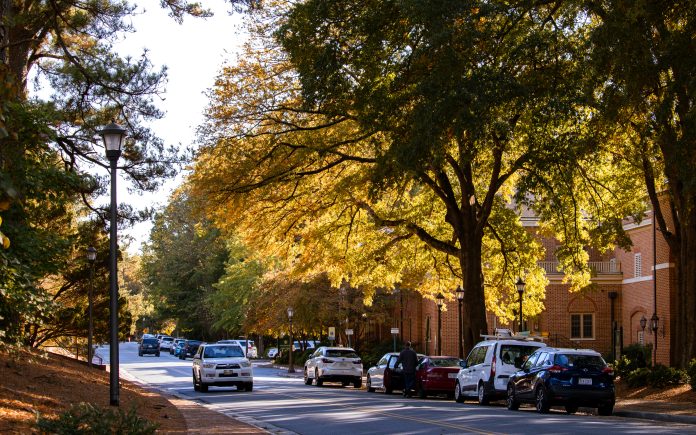Roswell Miller is a senior majoring in history and economics. He is a member of Club Water Polo and a Research Assistant for the economics department. Contact him at rtmiller@wm.edu.
The views expressed in the article are the author’s own.
Four years ago, I arrived at the College of William and Mary. During orientation, I was told that despite Williamsburg being a college town, cars do not look out for students on the road.
A year ago, I wrote an op-ed for a class — on which much of the rest of this essay is based — asking why our campus was limiting its investment in infrastructure to buildings only.
Then, a few months ago, I moved into a house on Jamestown Road, where the first thing my neighbor shared with me was a half dozen horror stories of students being hit by cars in front of their home.
And over the summer, I joked with friends about committing “tactical urbanism” and adding sidewalks myself because no one else seemed to be doing it.
All of this is to say, the students know it, the neighbors know it and I suspect the administration knows it too: our town is not safe for pedestrians. Richmond Road and Jamestown Road are unsafe streets. They are wide with nothing to encourage drivers to slow down beyond a few painted strips and lights often obscured by trees.
Our campus is almost as bad. The only piece of traffic-calming infrastructure is a speed hump whose purpose seems more to be to allow event organizers to back up to the Raymond A. Mason Business School than to let students cross the road. Stop signs are blown through, and most of campus is pitch black at night.
In the United States, police are often pointed to as the solution. They should be pulling people over if they are speeding, which ideally will decrease speeding. However, beyond the fact that this answer has numerous problems like disproportionately affecting the poor, it is no panacea. It does not solve the problem.
People speed on purpose, and they speed on accident. Their phone pings. They get distracted. This is human nature. Our roads make it too easy to make mistakes at high speeds. Narrower roads make people drive slower. Speed bumps make people drive slower. Extra sidewalks make people pay a little more attention — and drive slower. It is not complicated. We know how to fix the problem. The school simply has not made the investment.
Over my three and a half years at the College, I have seen hundreds of millions of dollars of new investment either announced or built on campus. It has been needed. However, that investment should not come at the expense of everyday student safety. A lamppost is less than a thousand dollars. A speed bump is a few thousand. Protected bike lanes cost slightly more than that. A million dollars invested into pedestrian and bike safety would go a long way.
It is possible the investment is not strictly monetary. The precise jurisdiction of the roads adjacent to campus is unclear to me. Neither conversations with the College or Williamsburg police nor searching on the Internet has given me a clear answer. However, this lack of clarity does not excuse the problem.
Being president of a public university is an inherently political job. College President Katherine Rowe has relationships with state legislatures, the governor and many others. If she decided pedestrian and bike safety was worth pursuing, I am certain she could have connected with the Virginia Department of Transportation. But she has not, and now a student has been put into life-threatening condition on her doorstep.
Both Jamestown Road and Richmond Road should have protected bike lanes from where campus begins to Confusion Corner. There should be many more sidewalks (preferably raised) that visitors point and laugh at their sheer quantity. Campus should be riddled with speed bumps like a bad road rash. There should be so many lamps the genies get jealous. I can guarantee that if my visions came true, the net cost would be far less than a few hundred million dollars.
This problem is so simple and affordable to solve. The administration has the ability. Whether the solution requires political or monetary investment, the College can do it. It is a shame that it might take a student’s critical injury to act, but it would be far better than continuing the status quo. Our brand-new Arts Quarter is a wonderful investment in student life, but it will never save a student’s life. Investment in pedestrian-friendly infrastructure, though? That might.


If you have been in Williamsburg for 4 years then you should know the that confusion corner is located at the intersection of Lafayette St, Page St and York St. College corner is located at Jamestown, Richmond and Boundary St. Another thing also even though pedestrian have the right of way they still have a duty to look both ways before stepping into the streets.
Ken, college corner is often referred to as confusion corner
Well said. Thanks for taking the time and interest to raise the issue. I’ve thought the same thing every time I’ve driven on and around campus.